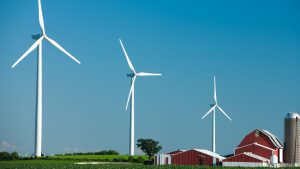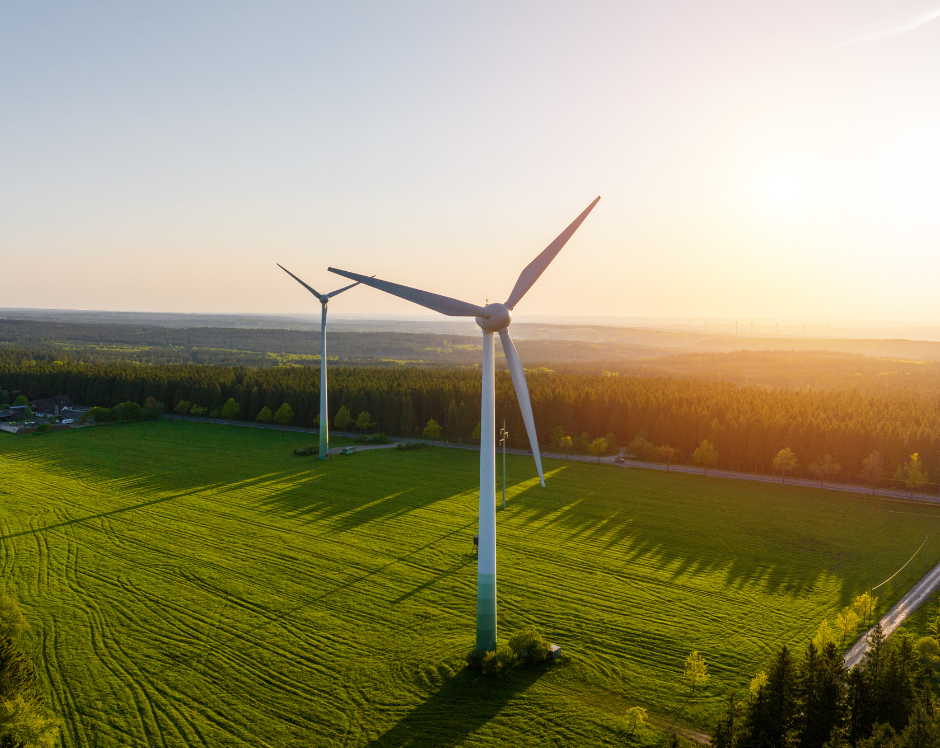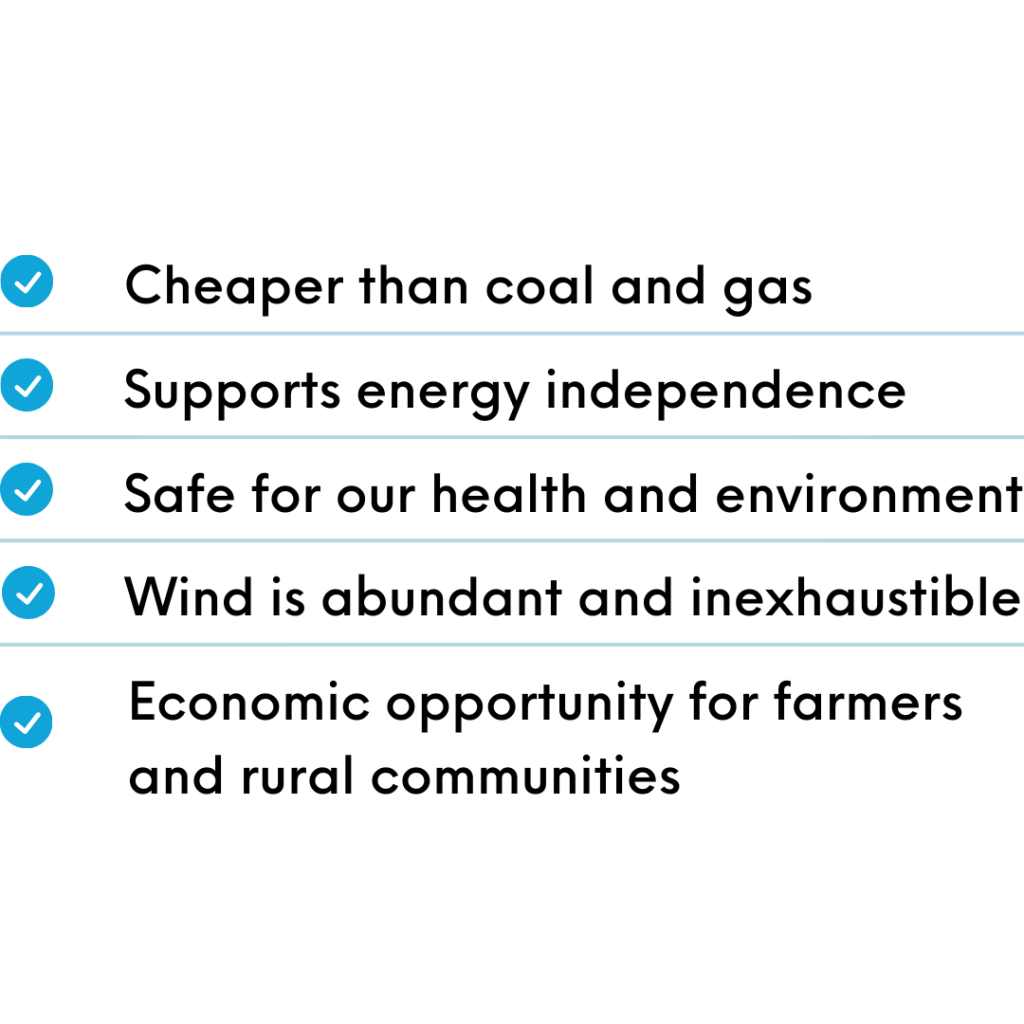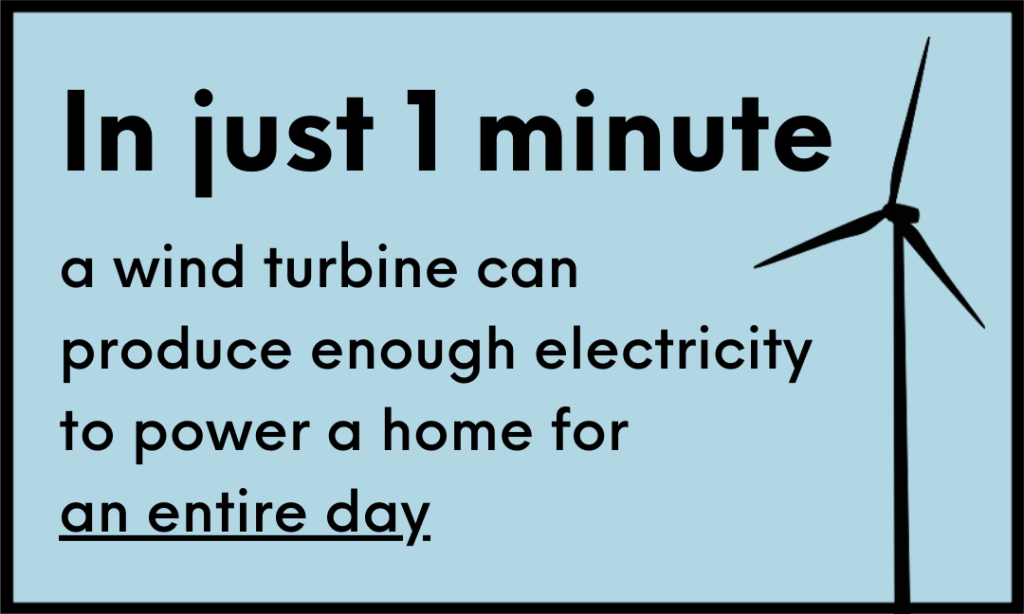Wisconsin-grown clean energy
Wisconsin has an abundance of wind blowing through our state each and every day, but we’re not harnessing its power as effectively as we should. This efficient energy source has the potential to help Wisconsin reach its goal of carbon-free electricity generation by 2050 while bringing transformative levels of investment to small and rural communities around the state.
Projects like Uplands Wind and Badger Hollow — two wind projects recently proposed by developers — would bring hundreds of megawatts of clean energy to Wisconsin’s energy grid, bringing us one step closer to achieving a clean energy economy.
Proposed Wind Projects in Wisconsin
Badger Hollow
Badger Hollow is the first wind project submitted for approval in Wisconsin in over a decade. Over the lifetime of the project, Badger Hollow will help transform Wisconsin’s energy sector.
- Badger Hollow will generate $64 million in economic investment for local communities hosting the project over its lifetime, including lease payments that will help farmers stay on the land
- Badger Hollow will provide 118 MW of energy upon completion — a critical step on our path to net-zero in Wisconsin
- Badger Hollow will generate $590,000 in local tax revenues in the form of utility aid payments that will let towns and counties fix roads and expand services
- Badger Hollow will create 200 jobs during construction and 4 permanent operations and maintenance jobs in Iowa and Grant counties.

Uplands Wind
Uplands Wind will provide clean energy, economic benefits, and jobs that move Wisconsin forward. Energy from the project will connect to the electric grid and help diversify Wisconsin’s energy supply.
- Uplands Wind represents a total capital investment of $1 billion
- Uplands Wind will provide 600 MW of energy upon completion — a critical step on our path to net-zero in Wisconsin
- Uplands Wind will generate $3 million annually for local communities hosting the project
- Uplands Wind will create 450–600 jobs during construction and 12-16 permanent jobs
- Uplands Wind will use local companies, services and materials

Local Benefits of Wind
Wind energy is essential to help Wisconsin meet its climate goals, but there are a host of other benefits this energy source provides beyond reducing our reliance on dirty fossil fuels. Transformative economic opportunities for rural communities, reliable income for local land owners and farmers, and improving Wisconsin’s energy independence make for compelling reasons to support utility-scale wind.
Economic Benefits For Farmers
By leasing out some of their land to host wind turbines – which farmers can continue to farm around – rural landowners are able to incorporate this stable, long-term income into their farm business plan. With more family farms struggling to make ends meet and going out of business, these leases can be an economic lifeline. Wind leases help diversify farm income, keeping more farms productive and viable to pass onto the next generation.
Support For Rural Communities
Per state law, local governments hosting any utility-owned solar project or a developer-owned solar project over 50 megawatts (MW) receive $5,000 per megawatt every year from the state’s utility aid fund. For a 600 megawatt, project like Uplands Wind, that’s $3 million every year for about 30 years. That money can help small communities meet urgent needs like investing in school buildings, repairing roads, and buying emergency response equipment.
Improving Wisconsin’s Energy Independence
Right now, Wisconsin sends $14 billion out of state every year to import fossil fuels. By capitalizing on a clean, renewable resource that blows across the Badger State, we can keep more of those dollars here and reinvest them in our communities. Homegrown wind energy helps us become more energy independent and resilient.
Learn More

Showing up for wind in Wisconsin
There are many reasons we should be producing more homegrown energy in Wisconsin, and to do that, we need to speak up and support building new wind farms in our communities. Learn how you can support Wisconsin wind today.



